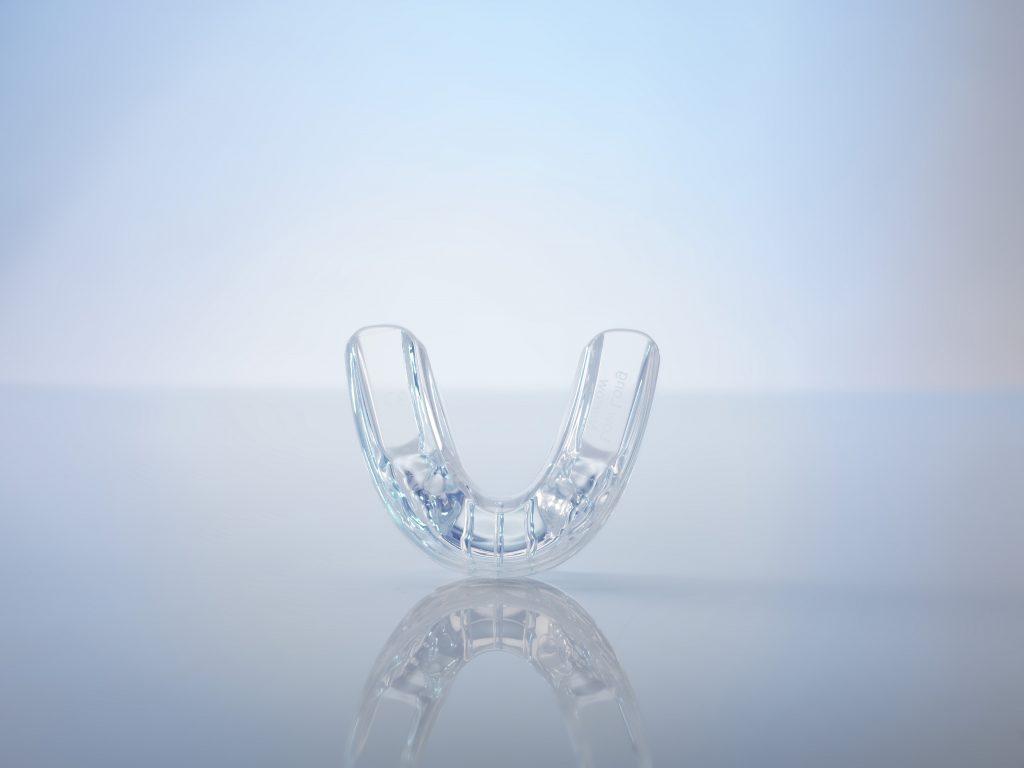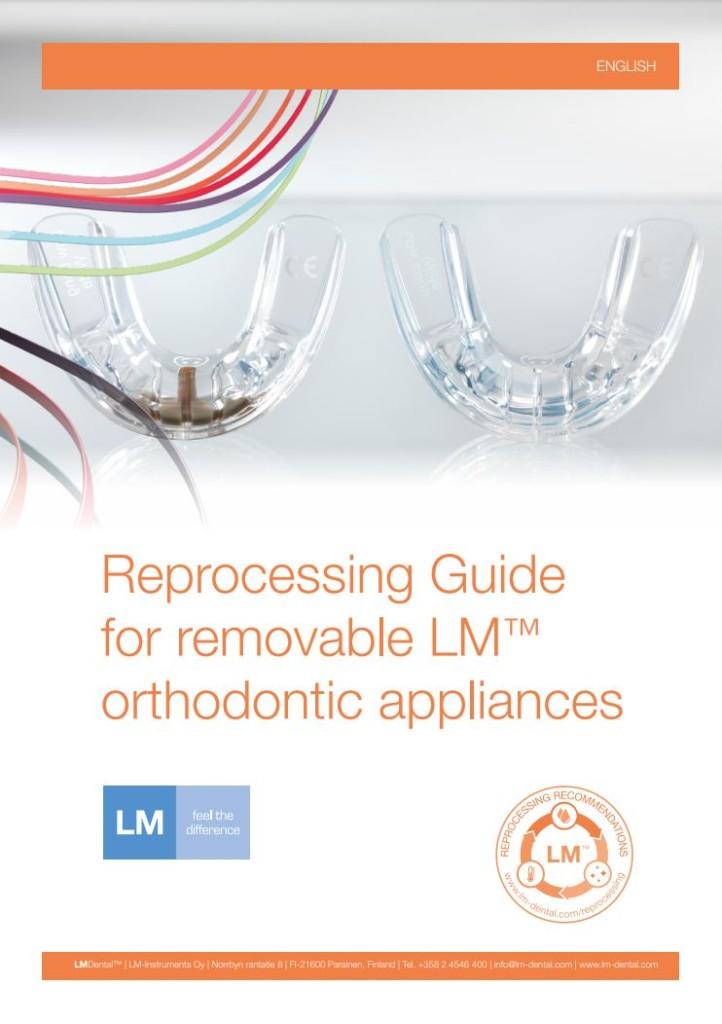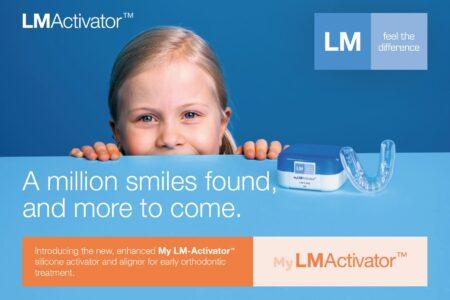
EASY TO SELECT THE SIZE OF LM-ACTIVATOR™
A large number of model and size combinations makes it possible to select an LM-Activator™ that is appropriate for the patient.
Selecting the size of LM-Activator™ with LM-OrthoSizer™
LM-OrthoSizer™ is a tool for aiding the selection of the appropriate LM-Activator™ size. The size is indicative and LM-Activator™ should always be fitted to ensure the correct size. There are two models: one for LM-Activator™ (LM 9400) and another for LM-Activator™ 2 (LM9402). Both are compatible with LM™ mirror handles (LM 25 SI/XSI/ES, LM 28 XSI/ES).
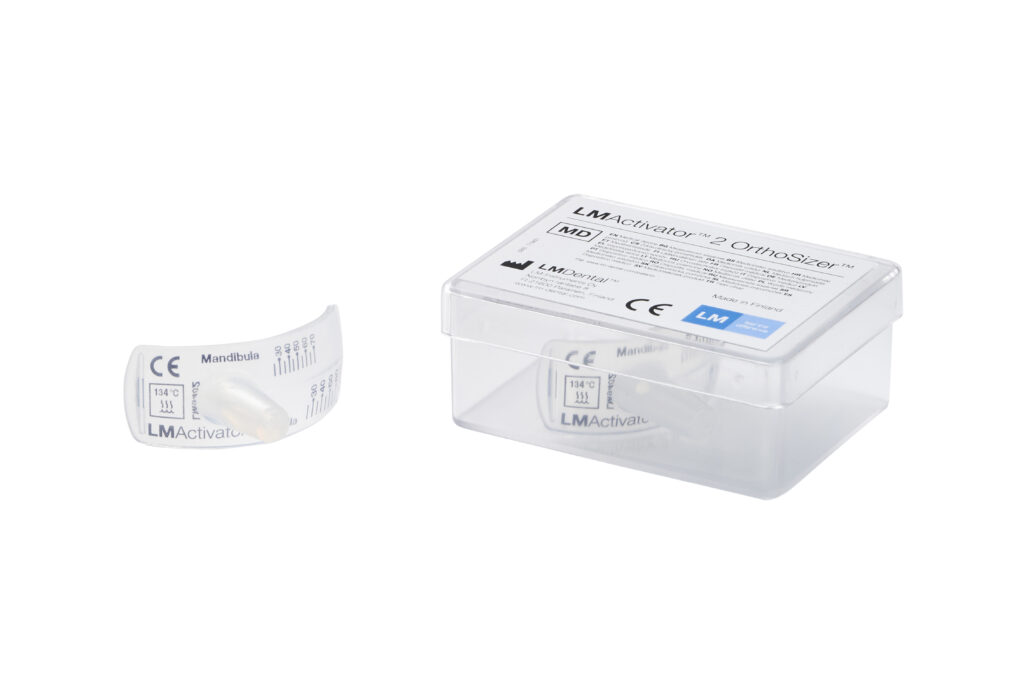
LM-Activator™ 2 OrthoSizer™ (LM9402) is used with LM-Activator™ 2 models. Separate measures for mandible and maxilla improve the accuracy.
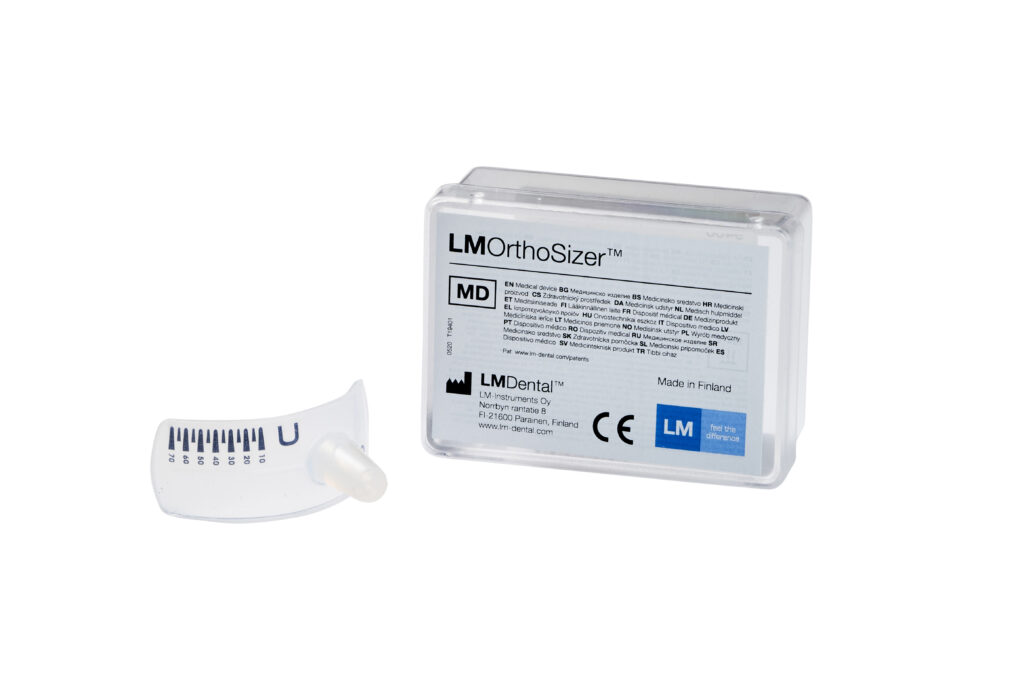
LM-OrthoSizer™ (LM 9400) is used with LM-Activator™ models.
LM-Activator™ 2 OrthoSizer™ measures the distance across the incisors from the distal surface of the left lateral incisor to the right lateral incisor.
Place the elevated marker between the left maxillary lateral incisor and canine. Ensure that the text Maxilla is at the upper jaw and the text Mandibula at the lower jaw.
Read the scale between the right maxillary lateral incisor and canine (i.e. at the mesial surface of the canine). Sizes 10, 20, 30… are indicated with larger markers with a dot whereas sizes 15, 25, 35… are indicated with smaller markers. (In the right side photo the size indication is 55.)
If you wish to get an indication of the size separately for the mandible, use the LM-Activator™ 2 OrthoSizer in the same way in the mandible.
In case of crowding, consider a larger appliance and in case of diastemas, consider a smaller appliance. Fit LM-Activator™ on the patient and double check that the teeth sit properly in the slots both in the maxilla and in the mandible.
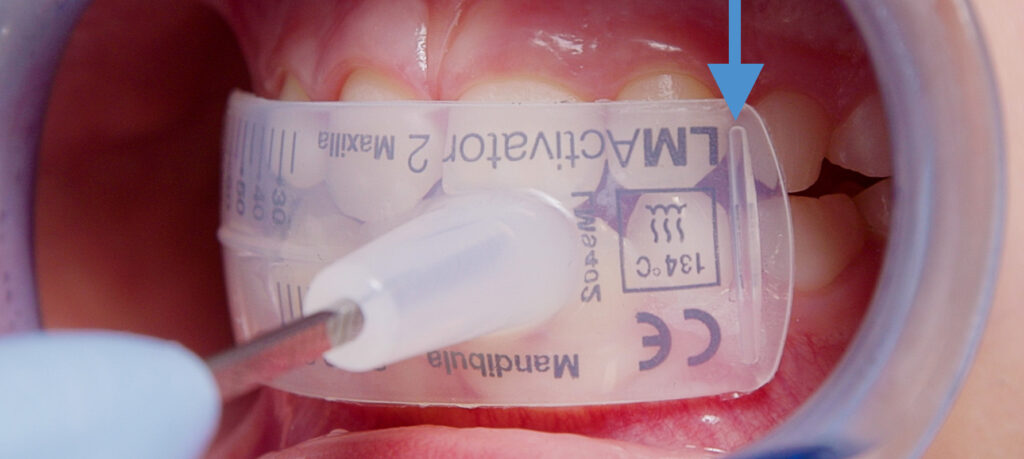
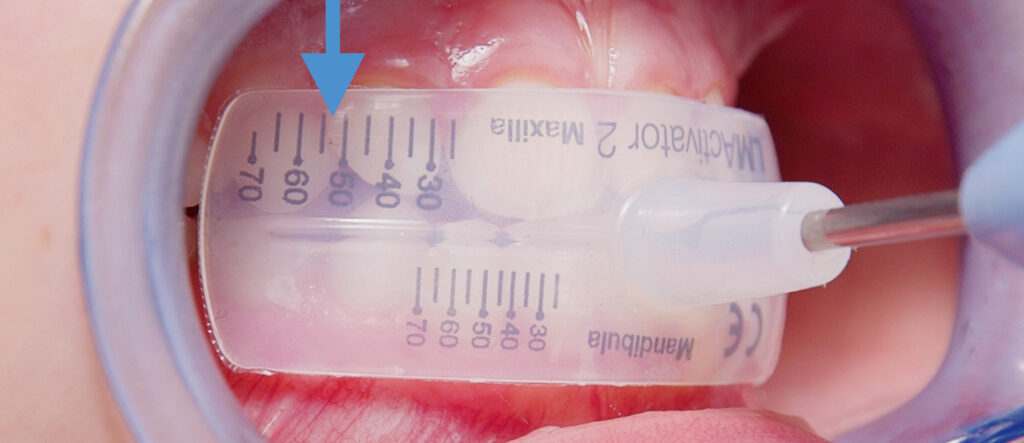
Fitting
Fitting the appliance to the patient is the most important step of size selection. Appliances used for fitting can be sterilized in an autoclave.
1. No crowding and no risk of crowding
Choose the size that matches the dentition. The canine rests at the bottom of the slot and no distalizing force is placed on the canine. If there is no crowding or risk of crowding, the size in the photo is correct. If there is crowding or crowding is expected, consider a larger size to enable expansion of the arch perimeter. In case of diastema consider choosing a smaller size.
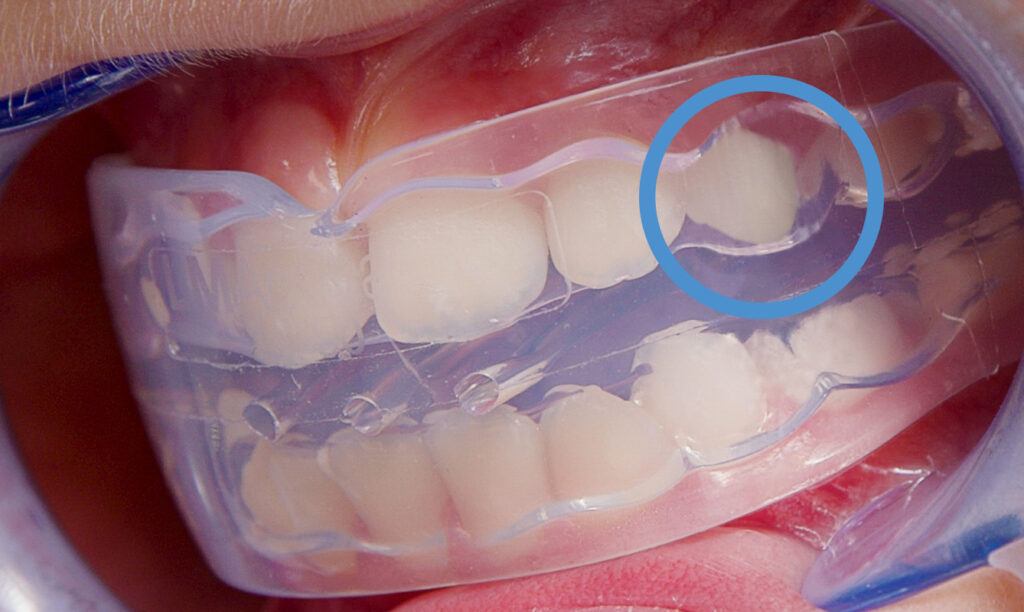
2. Crowding or risk of crowding
This size is larger than in Figure. 1.
The canine is guided by LM-Activator™ towards the bottom of its’ slot and applies a force that pushes the canine distally. This size is appropriate if crowding is present or expected and arch perimeter expansion is needed.

3. The size is too large
The appliance is too large. The canine is guided against a ridge between two slots and the appliance does not guide teeth properly. Choose a smaller size.
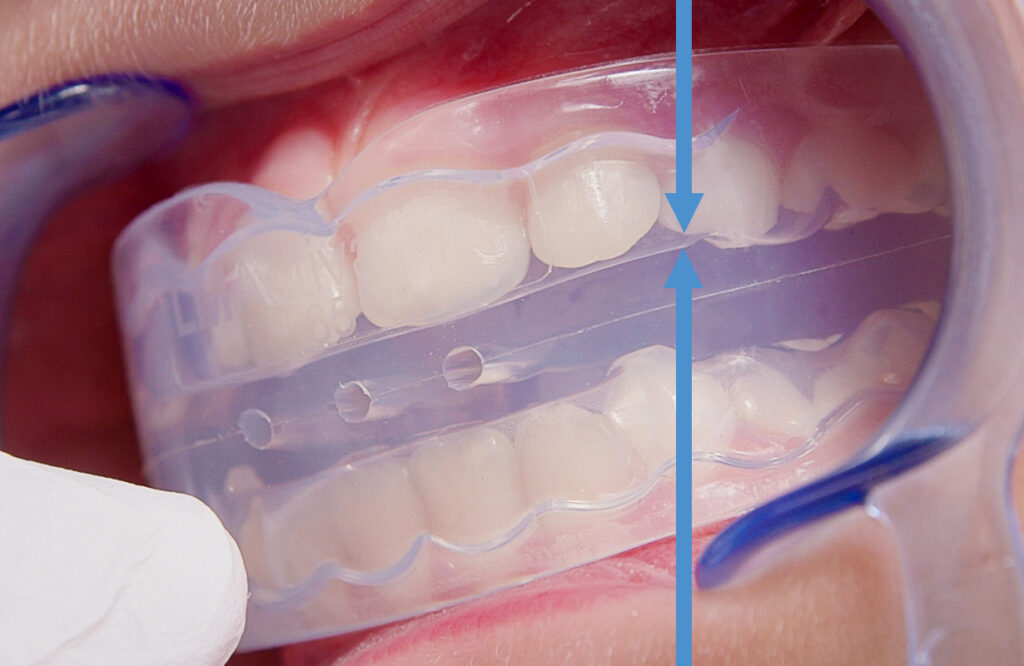
At follow-up check-ups with the patient, ensure that the size is still correct.
Re-evaluate the size of the appliance when the permanent maxillary and mandibular lateral incisors begin to erupt. It may be necessary to switch to a larger appliance.
